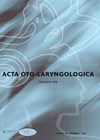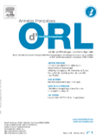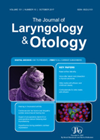
Journal Reviews
Does use of pectoralis muscle myocutaneous flap (PMMCF) reduce postoperative pharyngocutaneous fistula complication after salvage laryngectomy?
Salvage laryngectomy for recurrent laryngeal carcinoma following failed radiotherapy or chemoradiotherapy is associated with high postoperative complication rate. The primary aim of this paper was to assess whether use of muscle myocutaneous flap (PMMCF) as an interposition graft reduces the...
Paediatric nasopharyngeal carcinoma
Between 11 and 18% of nasopharyngeal carcinomas (NPC) occur in the paediatric age group but there are no specific management guidelines for this age group. Tunisia is a region with an intermediate incidence of NPC, the authors studied 40 cases...
Role of intranasal steroids after radiotherapy for nasopharyngeal carcinoma
Rhinosinusitis often follows radiotherapy in the treatment of carcinoma of the nasopharynx. The interval and severity may vary with the dose of radiation and stage of the carcinoma. In this randomised, controlled study, patients who developed rhinosinusitis after radiotherapy treatment...








